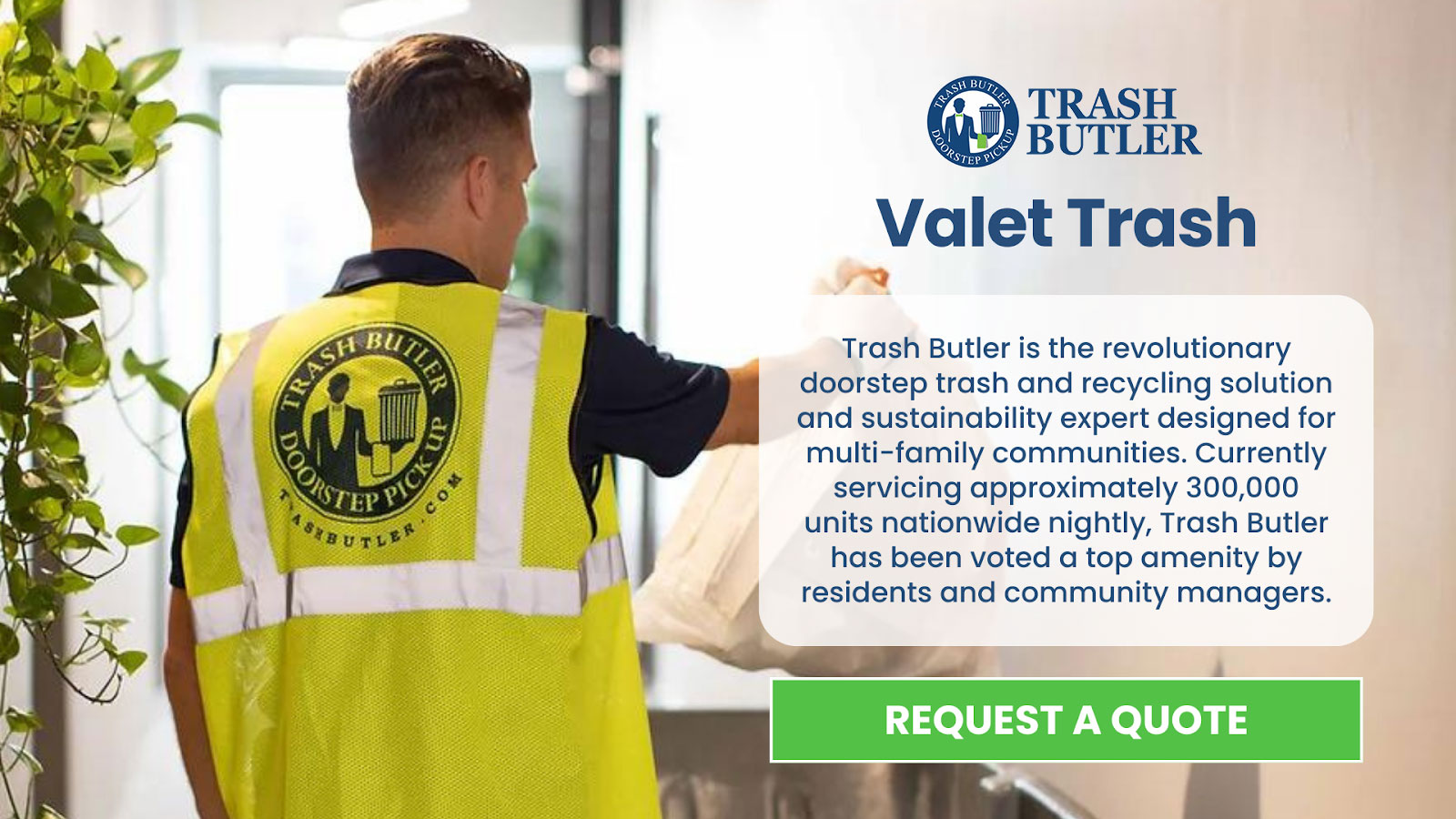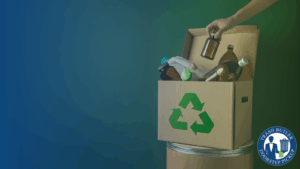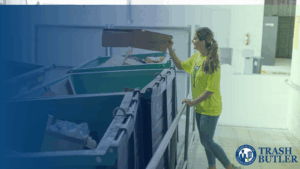Key Takeaways:
- Littering Poses Significant Environmental, Health, And Economic Challenges: Littering adversely affects ecosystems, wildlife, and public health while imposing substantial economic costs on communities for cleanup and management.
- Education, Community Involvement, And Technological Innovations Are Crucial For Litter Prevention: Effective strategies to combat littering include public education campaigns, community engagement in cleanup activities, and the adoption of technological solutions like smart waste management systems and mobile applications.
- Sustainable Practices And Policy Measures Are Key To A Litter-Free Future: Advancements in sustainable product design, stricter waste management regulations, and global collaboration efforts are essential for reducing the production of litter and its environmental footprint.
Littering is a global issue that affects our environment in numerous negative ways. From plastic waste choking our oceans to trash polluting our landscapes, the consequences of littering are far-reaching and severe. Understanding the impact of littering on the environment is crucial in order to effectively address and mitigate this pressing problem.
The prevalence of litter can be seen in cities, parks, beaches, and even remote wilderness areas, where the sight of discarded waste not only detracts from the natural beauty of the surroundings but also poses significant dangers to wildlife and ecosystems.
Definition Of Littering
Littering is the act of improperly disposing of waste materials in public spaces. This includes streets, parks, rivers, and beaches. Littering not only contributes to pollution and environmental degradation, but also negatively affects wildlife and can lead to substantial economic costs for cleanup and management.
Impact On Wildlife
One of the most alarming aspects of littering is its harmful effects on wildlife. Animals often mistake littered items like plastic bags, bottles, and cans for food. This leads to ingestion and potential suffocation.
Habitat Destruction And Soil Pollution
Littering contributes to habitat destruction and soil pollution. Non-biodegradable materials take years to decompose. This releases toxins and chemicals into the environment as they break down.
Risks To Human Health
Littering poses risks to human health. It creates breeding grounds for pests and bacteria. This contaminates water sources and compromises air quality.
Solutions
To combat the detrimental effects of littering, individuals must take responsibility for their waste disposal habits. It’s important to participate in recycling efforts. You can also engage in community clean-up initiatives.
Types Of Litter Commonly Found In The Environment
Litter can come in various forms, each with its own set of consequences for the environment. Understanding the different types of litter commonly found in the environment can shed light on the scope of the problem and motivate individuals to take action to reduce littering. Some of the most common types of litter include:
Plastic Bags
Plastic bags are one of the most prevalent forms of litter found in the environment. Their lightweight nature allows them to easily be carried by the wind, leading to them getting tangled in trees, rivers, and other natural habitats. The slow degradation of plastic bags also poses a serious threat to wildlife that may ingest or become entangled in them.
Cigarette Butts
Cigarette butts are not only unsightly but also harmful to the environment. They contain toxic chemicals that can leach into the soil and water, posing a threat to plant and animal life. Additionally, wildlife may mistake them for food.
Food Packaging
Fast food packaging, wrappers, and containers are frequently discarded as litter, especially in urban areas. These items take a long time to degrade. This clutters the environment and poses a risk to wildlife that may consume them.
Plastic Bottles
Plastic bottles are a major source of litter that can be found in various environments, from parks to beaches. Their durability and widespread use make them a significant contributor to environmental pollution. Improperly disposed of plastic bottles can leach harmful chemicals, impacting ecosystems and wildlife.
By being aware of the common types of litter found in the environment, individuals can make informed choices to reduce waste and protect the natural world for future generations.
Immediate Effects Of Litter On Local Ecosystems
Alteration Of Soil And Water Quality
Accumulated litter can change soil composition and nutrient levels. In aquatic ecosystems, litter can block waterways. This disrupts nutrient flow and oxygen levels essential for marine life.
Aesthetic And Recreational Impacts
Litter diminishes the visual appeal of natural habitats, affecting both wildlife and human residents. Trash-strewn landscapes reduce recreational opportunities. This detracts from the beauty of the environment and lowers property values.
Call To Action
To address the immediate effects of litter on local ecosystems, proactive measures are necessary. Proper waste disposal, recycling, participation in clean-up efforts, and advocacy for anti-littering policies can help mitigate these impacts. They can protect ecosystem health for future generations.
Long-Term Environmental Consequences Of Litter
Discarded items like glass and metal clutter natural spaces. They can disrupt the balance of ecosystems. Decomposing litter can release greenhouse gases like methane, contributing to climate change.
The Impact Of Litter On Wildlife
Animals can become entangled in litter such as plastic bags, causing injuries or even death. The presence of litter can also disrupt natural behaviors and migration patterns of wildlife, impacting ecosystems and biodiversity in profound ways. It’s essential to understand the significant threat that litter poses to our wildlife and take action to prevent further harm.
The Impact Of Litter On Marine Life
Entanglement Of Marine Animals
One of the most alarming consequences of littering on marine ecosystems is entanglement. Discarded fishing nets, plastic bags, and other debris can ensnare marine creatures like turtles, dolphins, and seabirds. This leads to injury and even death.
Impact On Habitat
The presence of litter in marine environments can also impact the habitat of various species. Coral reefs, crucial ecosystems that support a diverse array of marine life, are particularly vulnerable to damage from litter. Plastics and other debris can smother coral, inhibiting their growth and disrupting the delicate balance of these underwater habitats.
Long-Term Risks
The degradation of litter in marine environments poses long-term risks to both marine life and human populations. Plastics slowly break down into smaller particles known as microplastics. These can be ingested by marine organisms and eventually make their way up the food chain, potentially reaching humans through seafood consumption.
Call To Action
The detrimental effects of littering on marine life highlight the urgent need for individuals and communities to take action. It’s important to reduce waste generation and properly dispose of trash. This will protect our oceans and the creatures that call them home.
The Visual Pollution Of Our Natural Landscapes
Littering not only poses a danger to wildlife and the ecosystem but also significantly impacts the aesthetic appeal of our natural landscapes. The sight of trash scattered across pristine environments such as beaches, forests, and parks is not only disheartening. It can also have psychological effects on visitors.
Impact On Aesthetic Appeal
Imagine taking a hike through a beautiful national park only to be surrounded by discarded plastic bottles, food wrappers, and other litter. The presence of litter can evoke negative feelings. These visual cues can detract from the overall experience of being in nature, diminishing the sense of serenity and wonder that these places are meant to inspire.
Economic Implications
Additionally, visual pollution from litter can have economic implications. Tourist destinations that are marred by litter may experience a decrease in visitor numbers, as people are less likely to frequent locations that are perceived as dirty or unkempt. This can have ripple effects on local businesses that rely on tourism for revenue. This further underscores the importance of addressing the issue of littering in natural landscapes.
Taking Action
To combat the visual pollution caused by littering, individuals can take simple yet impactful steps. These include participating in cleanup and and advocating for litter policies. By working together to keep our natural landscapes clean and litter-free, we can preserve the beauty of these spaces for future generations to enjoy.
Final Thoughts
Littering is a destructive practice that harms the environment in numerous ways. From polluting water sources to endangering wildlife, the consequences of littering are far-reaching and severe. It is essential for individuals to take responsibility for their waste and dispose of it properly to protect our planet.
By raising awareness about the effects of littering and educating others on the importance of waste management, we can all work together to combat this environmental issue. Implementing recycling programs, using reusable resources, and cleaning up litter in our communities are just a few ways we can make a positive impact.
Remember, every small choice contributes to a cleaner, safer environment for future generations. Let’s work together to reduce littering and preserve the beauty of our planet. Request a quote today!
Frequently Asked Questions
What is littering?
Littering refers to the improper disposal of waste products in public places or natural environments, rather than disposing of them in designated waste or recycling bins. This action results in pollution and various negative effects on the environment, wildlife, and human health.
How does littering affect the environment?
Littering can lead to soil, water, and air pollution. It disrupts the natural beauty of environments and can cause harmful substances to leach into the ground and waterways, affecting plant growth and water quality. Litter can also contribute to more severe environmental problems, such as the clogging of drainage systems and increased flooding.
What are the most common types of litter?
The most common types of litter include items like cigarette butts, plastic bags and bottles, food packaging, and beverage cans. These items are frequently found in parks, beaches, streets, and other public places.
How does littering affect wildlife?
Wildlife can suffer greatly due to littering. Animals may ingest litter mistaking it for food, which can lead to internal injuries or death. Entanglement in litter items, such as plastic bags and six-pack rings, can also cause suffocation, drowning, or mobility issues for wildlife.
What impact does plastic litter have on oceans?
Plastic litter in oceans poses a massive threat to marine life and ecosystems. It leads to the creation of “garbage patches” and can be ingested by marine animals, leading to starvation, injury, and death. Furthermore, plastic litter breaks down into microplastics, polluting water and entering the food chain.
How much litter ends up in oceans each year?
It is estimated that approximately 8 million metric tons of plastic waste enter the world’s oceans annually. This accumulation significantly harms marine ecosystems and contributes to the global crisis of ocean pollution.
Can littering contribute to climate change?
Yes, littering can contribute to climate change. Decomposing organic waste in landfills emits methane, a potent greenhouse gas, while the production, transportation, and disposal of littered items consume energy and release CO2 and other greenhouse gases.
What are the consequences of littering for communities?
The consequences of littering for communities include reduced aesthetic appeal and property values, increased clean-up costs, and potential health hazards. Littered environments can also discourage tourism and business investments, affecting an area’s economic health.
How does littering affect public health?
Litter can affect public health by harboring harmful pathogens and pests, such as rats and mosquitoes, which can spread diseases. Chemicals leaking from litter can contaminate water sources, posing a risk to human health when ingested.
How long does it take for litter to decompose?
The decomposition time for litter varies widely depending on the material. For example, paper might decompose in a few weeks to months, while glass bottles can take up to a million years, and plastic items might never fully decompose, breaking down into microplastics instead.







